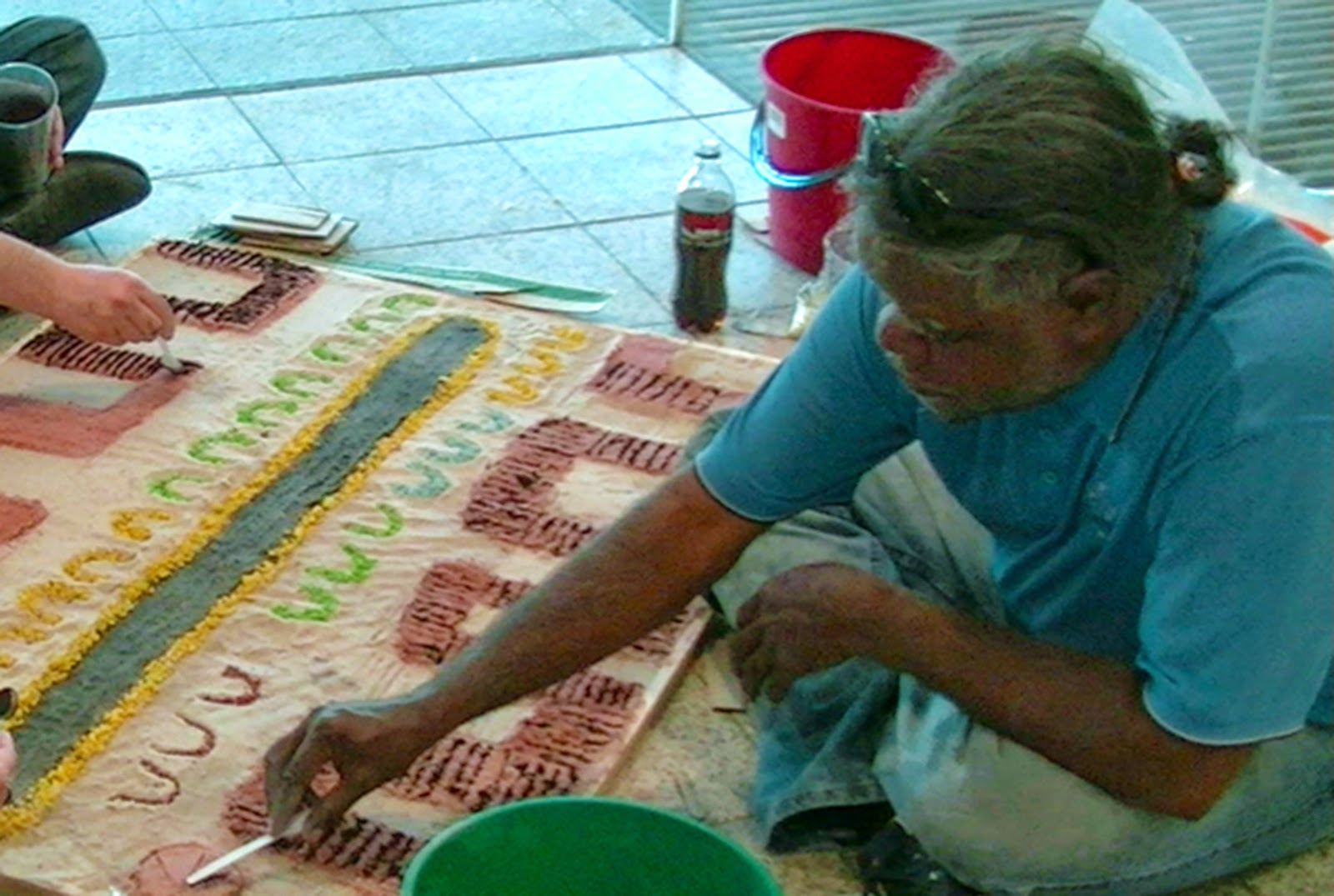While researching about Warlpiri diaspora and migration, I came across a fantastic article in
The Asia Pacific Journal of Anthropology entitled
Indigenous Diaspora and the Prospects for Cosmopolitan 'Orbiting': The Warlpiri Case. This article was written by Paul Burke in 2013 and had incredible information pertaining to this exact topic for this blog post.
It has been found that not a significant number of Warlpiri people have migrated out of the country of Australia, with only a few artists and businessmen in exception to this but usually only as a temporary diaspora. Many will migrate away from their ancestral homeland, but will stay in the country as their permanent diaspora, and through my research I've found four reasons a Warlpiri native would choose to migrate.
Prohibition:
Since the 1980's alcohol and the drinking lifestyle has been strictly prohibited on the Walrpiri home settlements. Some people will move off of the ancestral ground in order to pursue a drinking and partying lifestyle in nearby towns free from the constrictions of their home.
Marriage and Education:
I was going to break these two up into two different paragraphs, but either one I decided to tackle tied in with the other. On the subject of education, Warlpiri children can be sent away to boarding school where they are introduced to a whole different world outside of their settlements, enticing them to stay away from home permanently. One of these enticing reasons could be finding a mate outside of his or her culture/settlement, marrying, and deciding to settle where the other spouse is from. Also, in order to ensure that their children will have an excellent education, a Warlpiri native may move away from the settlement and into a nearby town where the child will get adequate schooling. This is moreso a voluntary diaspora.
Involuntary Diaspora:
In some instances, a diaspora may not be a voluntary act. In the cases of medical issues and aging elder care, the resources needed for them may not be available in the home settlements. Also, if a person is convicted of a crime and sent to jail, they would be involuntarily leaving their home settlement to serve time for their crime.


